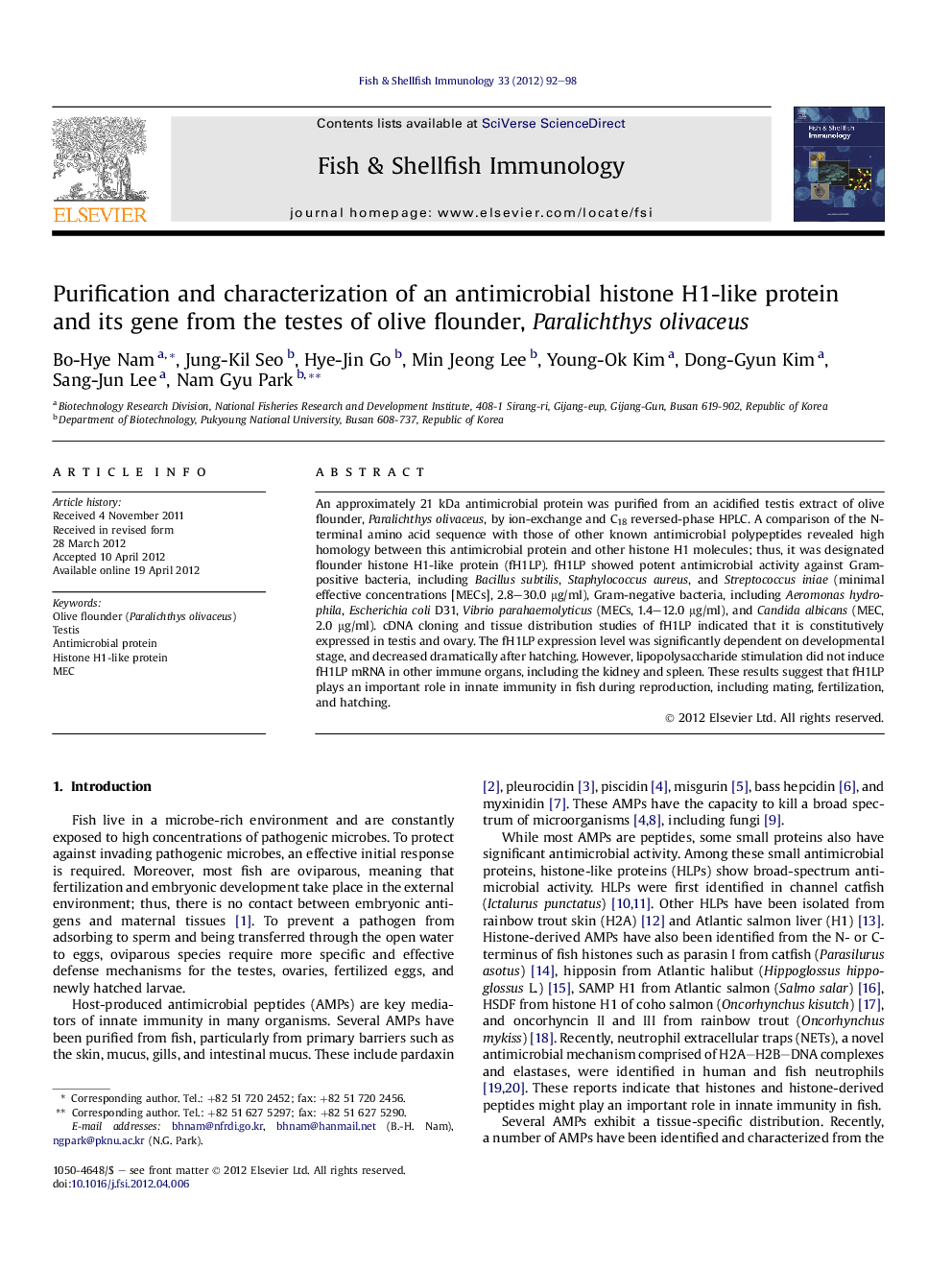| کد مقاله | کد نشریه | سال انتشار | مقاله انگلیسی | نسخه تمام متن |
|---|---|---|---|---|
| 2432147 | 1106783 | 2012 | 7 صفحه PDF | دانلود رایگان |

An approximately 21 kDa antimicrobial protein was purified from an acidified testis extract of olive flounder, Paralichthys olivaceus, by ion-exchange and C18 reversed-phase HPLC. A comparison of the N-terminal amino acid sequence with those of other known antimicrobial polypeptides revealed high homology between this antimicrobial protein and other histone H1 molecules; thus, it was designated flounder histone H1-like protein (fH1LP). fH1LP showed potent antimicrobial activity against Gram-positive bacteria, including Bacillus subtilis, Staphylococcus aureus, and Streptococcus iniae (minimal effective concentrations [MECs], 2.8–30.0 μg/ml), Gram-negative bacteria, including Aeromonas hydrophila, Escherichia coli D31, Vibrio parahaemolyticus (MECs, 1.4–12.0 μg/ml), and Candida albicans (MEC, 2.0 μg/ml). cDNA cloning and tissue distribution studies of fH1LP indicated that it is constitutively expressed in testis and ovary. The fH1LP expression level was significantly dependent on developmental stage, and decreased dramatically after hatching. However, lipopolysaccharide stimulation did not induce fH1LP mRNA in other immune organs, including the kidney and spleen. These results suggest that fH1LP plays an important role in innate immunity in fish during reproduction, including mating, fertilization, and hatching.
► A histone H1-like protein was isolated from an acidified testis extract of olive flounder.
► This protein showed potent antimicrobial activity against Gram-positive and Gram-negative bacteria, and Candida albicans.
► The mRNA was constitutively expressed in testis and ovary.
► The mRNA expression level was significantly dependent on developmental stage.
Journal: Fish & Shellfish Immunology - Volume 33, Issue 1, July 2012, Pages 92–98